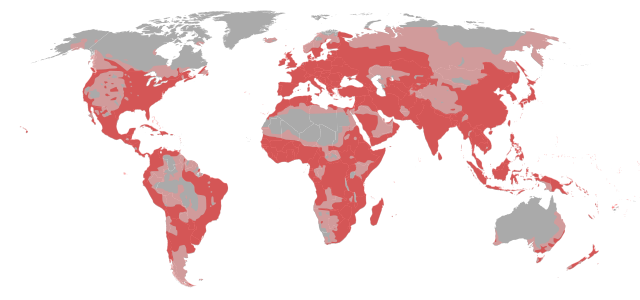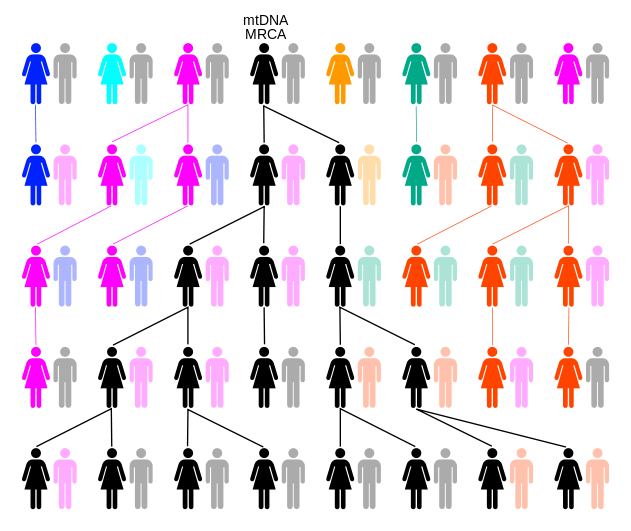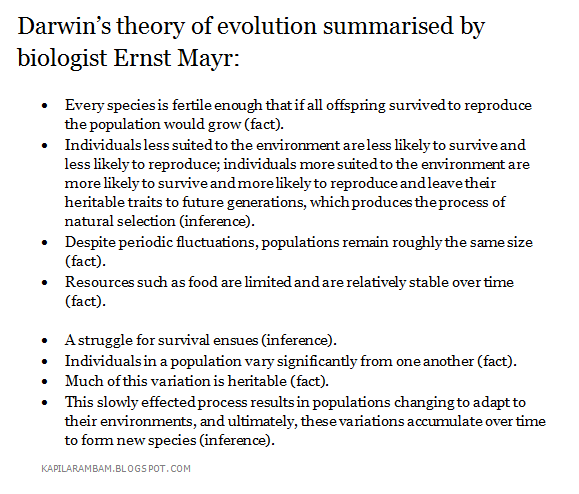Human Evolution 101
A short introduction to scientific theories that deal with the evolution of human beings
In brief
1. Out of Africa
2. Out of Asia
3. Multiregional Hypothesis
The earliest migrations of pre-modern and modern human, according to the Out of Africa theory, began two million years ago with the migration of Homo erectus out of Africa. The journey of other pre-modern humans including H. heidelbergensis, the closest ancestor of both modern humans and Neanderthals followed soon afterwards. Finally, Homo sapiens moved out of Africa around 200,000 years ago, spread across Asia from 75,000 years ago.
Informally known as the out of Africa (OOA) theory, palaeontologists call it by different names such as:
• Recent African origin of modern humans
• Recent single-origin hypothesis (RSOH)
• Replacement hypothesis
• Recent African origin model (RAO)
However, some scientists view that it should be Asia rather than Africa. This could be a great news for the Manipur-based cultural group, Universal Friendship Organisation (Satjal), which preaches that human beings originated from the Koubru mountain, the Meitei’s birthplace. Though the Out of Asia theory has fewer takers now, until the mid 20th century, more anthropologists used to believe that human beings were first born in Asia. Currently, Africa has more votes than Asia.
As an alternative to OOA, some other scientists have come up with the scientific model of the multiregional hypothesis, which is also known as the multiregional evolution (MRE) or the polycentric theory. According to the proponents of this hypothesis, human beings were born two million years ago and evolved within a distinct, continuous human species. Out of the three theories on the evolution of human, the multiregional hypothesis has the least support.
Main proponents
Out of Africa Charles Darwin, Thomas Huxley, Carleton Coon, Chris Stringer
Out of Asia Ernst Haeckel, Eugene Dubois, Henry Fairfield Osborn, Roy Chapman Andrews, Johan Gunnar Andersson, Otto Zdansky, Walter W. Granger, Von Koenigswald
Multiregional Hypothesis Milford Wolpoff, Alan Thorne, Xinzhi Wu
 |
| A graph detailing the Multiregional Hypothesis of human evolution. Image: Fred the Oyster/Wikimedia Commons |
Watch
• Dawn of Humanity A 2015 documentary film: Deep in a South African cave, an astounding discovery reveals clues to what made us human
• Becoming Human A three-part series on evolution, with computer-simulated rendition of our predecessors, based on interviews with paleoanthropologists and archaeologists as they explain the scientific processes of evolution, excavation and investigation
• Walking with Cavemen A film that provides a cinema-graphic, thought-provoking introduction to human development, while presenting stimulating and investigative vignettes to follow the build-up of the traits that make modern humans what they are today
| Image: DEIDATVM/Wikimedia Commons |
• Ape to Man A show on historical perspective on human origins research through interviews with an evolutionary biologist and a paleoanthropologist, beginning with the first discovery of early human remains and chronicling some of the most important advancements and events in the field
• The Journey of Man This “Story of the Human Species" focuses on the genetic proof for an African origin of Homo sapiens and explains both the heterogeneity and homogeneity that the human species demonstrates today
• Evolution “A Journey Into Where We’re From and Where We’re Going,” it is a seven-part series that presents a concise, but all-inclusive review of the most important topics in evolutionary hypothesis
Vocabulary
ABIOGENESIS The natural process of life arising from non-living matter, such as simple organic compounds; considered to have occurred on Earth between 3.8 and 4 billion years ago
ANATOMICALLY MODERN HUMANS (AMH) OR ANATOMICALLY MODERN HOMO SAPIENS (AMHS) Individual members of Homo sapiens with an appearance consistent with the range of phenotypes in modern humans
BIOLOGICAL DETERMINISM A term used in literature to describe the belief that human behaviour is controlled solely by an individual’s genes or some component of physiology
CEPHALOMETRY The measurement of the head, usually the human head, especially by medical imaging such as radiograph
CREATION–EVOLUTION CONTROVERSY A frequent cultural, political and theological debate about the origins of the Earth
CREATIONISM The religious belief that the Universe and life originated from specific acts of divine creation
ETHNOLOGY A branch of anthropology that compares and analyses the characteristics of different peoples and the relationship between them
EUGENICS A set of beliefs and practices which aims at improving the genetic quality of the human population
EVOLUTION The change in the heritable traits of biological populations over successive generations
MITOCHONDRIAL EVE In human genetics, Mitochondrial Eve is the matrilineal most recent common ancestor (MRCA), in a direct, unbroken, maternal line, of all currently living humans, who is estimated to have lived approximately 100,000–200,000 years ago
MODERN EVOLUTIONARY SYNTHESIS A twentieth-century synthesis of ideas from several fields of biology that provides an account of evolution which is widely accepted (Also known as the new synthesis, the modern synthesis, the evolutionary synthesis, millennium synthesis or the neo-Darwinian synthesis)
MONOGENISM A theory of human origins which posits a common descent for all human races, opposite to polygenism
NATURE–CULTURE DIVIDE A theoretical foundation of contemporary anthropology on whether nature and culture function separately from one another, or if they have a continuous biotic relationship with each other
THE ORIGIN OF SPECIES A work of scientific literature by Charles Darwin which is considered to be the foundation of evolutionary biology; first published in November 1859, its original title was On the Origin of Species by Means of Natural Selection, or the Preservation of Favoured Races in the Struggle for Life. In later edition, ‘On’ was omitted, so the title becomes The Origin of Species by Means of Natural Selection, or the Preservation of Favoured Races in the Struggle for Life, or simply The Origin of Species.
PALEOANTHROPOLOGY The study of the formation and the development of the specific characteristics of humans and the reconstruction of evolutionary kinship lines in the family Hominidae, by means of the study of fossils, such as petrified skeletal remains, bones fragments, footprints and associated evidence, stone tools, artefacts and settlement localities
tadpole
PHRENOLOGY A pseudoscience primarily focused on measurements of the human skull, based on the concept that the brain is the organ of the mind, and that certain brain areas have localised, specific functions or modules
PHYLETIC GRADUALISM A model of evolution which theorises that most speciation (the evolutionary process by which new biological species arise) is slow, uniform and gradual.
POLYGENISM A theory of human origins positing that the human races are of different origins (polygenesis); opposite to monogenism, which posits a single origin of humanity
RACIAL HYGIENE A set of early twentieth century state sanctioned policies by which certain groups of individuals were allowed to procreate and others not, with the expressed purpose of promoting certain characteristics deemed to be particularly desirable (E.g. the Nazis’ onslaught)
SCIENTIFIC RACISM The use of scientific techniques and hypotheses to support or justify the belief in racism, racial inferiority, or racial superiority, or alternatively the practice of classifying individuals of different phenotypes into discrete races
Y-CHROMOSOMAL ADAM In human genetics, Y-chromosomal most recent common ancestor (Y-MRCA); the most recent common ancestor (MRCA) from whom all currently living people are descended patrilineally
- Concluded.








I adore your suggestions and blog! They are really enjoyable to read. Thanks a lot:) As well recently i published a article you must read this at mentioned below:
ReplyDeleteScientific Thinking Method a Natural Progression in Human Evolution?
The iconic jump-cut scene from 2001: A Space Odyssey, which depicts the transition from a skeletal bone to a spacecraft, perhaps best describes the evolution of human thought.
While it may seem like a long progression for us to have evolved from a species originating on the African plains that first showed signs of independent existence about 3,00,000 years ago to stand on the verge of commercial space travel today, the whole process seems to be merely a flash - a jump-cut on the cosmic scale.
Thank you for sharing such content. Please keep sharing. For Genetics and Evolution Plaese keep following us on EtoosIndia
ReplyDeleteThank you for sharing such content. Please keep sharing. For in details information about Best NEET Coaching click here.
ReplyDelete